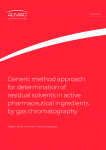How early utilisation of AI can de-risk and accelerate clinical development

In this Q&A, Dr Fabrice Chartier (FC), CEO of Simbec-Orion and Joern Klinger (JK), CEO of biotx.ai explore AI-enabled causal modeling, its unique advantages and strategic implementation for clinical development.
What is AI-enabled causal modelling and what is its main application?
JK: Both machine learning (ML) and AI are based on statistical modelling and most statistical modelling uses correlation. However, correlation does not always mean causation. Causal inference is different in that it is the type of statistics that goes after causation, proving that A causes B. The answers we get from causal modelling are more precise and more actionable than those based on correlations, making this type of modelling more appropriate for clinical trials and drug development.
AI-enabled causal modelling can be used to identify if a drug will show efficacy in clinical trials by analysing data from preclinical studies. This data can include information on the drug's mechanism of action, its target and its safety profile. By analysing this data AI-enabled causal modelling can identify patterns that suggest whether or not the drug is likely to be effective in humans.
How can AI-enabled causal modelling be used in clinical trial design?
FC: AI-enabled causal modelling can be used to design a clinical trial by simulating different trial designs and analysing the results. This can help to ensure that the trial is designed to have enough statistical power to detect the true effects of the drug.
There are several benefits to using AI-enabled causal modelling in clinical trial design, including:
- Reduced risk of failure: This includes helping to identify drugs that are more likely to be successful in clinical trials, which can reduce the risk of failure and save time and money.
- Accelerated development: By identifying promising drugs earlier in the process, AI-enabled causal modelling can accelerate drug development overall.
- Improved trial design: AI-enabled causal modelling can help to improve trial design, designing clinical trials that are more likely to deliver results.
- Reduced costs: By reducing the number of failed trials, AI-enabled causal modelling can help improve drug development cost-effectiveness.
The use of AI is leading to a shift towards more flexible and adaptive clinical trial designs. Adaptive clinical trial designs allow for data-driven decisions to be made throughout the study, enabling researchers to adjust the trial parameters as needed. This can help to ensure that the trial remains on track and that valuable resources are not wasted.
AI can also be used to analyse vast amounts of data from electronic health records, genetic databases and other sources to identify patients who are more likely to benefit from a particular drug, thereby improving patient selection for clinical trials. This can often lead to smaller, more efficient trials that are more likely to succeed.
What are the challenges of using AI-enabled causal modelling in drug development?
JK: While AI-enabled causal modeling offers immense potential for drug development, it's important to acknowledge the challenges. The effectiveness of these models relies heavily on large datasets, which might be scarce for early-stage drugs. An additional challenge is the need for high-quality data. AI models are only as good as the data they are trained on, which makes high-quality data essential for successful AI modelling. Biobanks often contain well-cleaned and standardised data that can be a strong foundation for AI analysis. However, to ensure the most robust results, it is important to combine this data with smaller, disease-specific datasets.
Another challenge is the need for regulatory approval. Regulatory agencies are still in the process of developing guidelines for the use of AI in clinical trials. As they are unfamiliar with AI-enabled causal modelling, regulatory agencies may require extensive evidence before accepting AI-derived results, potentially delaying drug approvals.
Additionally, developing and validating causal models demands significant time and resources. While there is a possibility that additional data analysis could add time to the trial, the benefits of AI-driven decision-making typically outweigh this risk. By leveraging AI, researchers can gain a deeper understanding of the data and make more informed choices throughout the development process. This can help to avoid costly mistakes and delays caused by unforeseen issues.
How can causal modelling and AI de-risk and accelerate clinical development?
FC: Traditionally, clinical development has been a lengthy and expensive process fraught with uncertainty. AI can mitigate these risks by providing critical information earlier in the development process. For instance, AI-enabled causal modelling can identify and measure causal biomarkers earlier in the clinical trial process. This not only reduces the risk of failed trials but also allows for more targeted trials, reducing the burden on patients.
Other AI approaches can also expedite clinical development in several ways. By analysing vast amounts of data from previous trials and clinical research, AI can help design more efficient clinical trial protocols. Furthermore, AI can be used to predict clinical outcomes, enabling researchers to prioritise the most promising drug candidates. This can shave years off the development timeline and get critical new therapies to patients faster.
Can AI help to identify opportunities for orphan drug designation?
JK: As AI can analyse vast amounts of data, it can be used to identify existing drugs that may be effective for rare or orphan diseases. Traditionally, this process would have been
time-consuming and expensive, relying on researchers to manually sift through data sets. AI can now analyse public biobank information alongside private data from pharmaceutical companies to find promising candidates for repurposing.
Of the 28,000 drugs on the market, approximately 14,000 no longer have any patent protection and around 4000 of those have already been deemed safe and have proof of mechanism after a successful phase 1 trial. Many of these off-patent drugs could be matched up with rare or orphan diseases and provide an effective therapy. Analysing that treasure trove of potential with AI can help to predict if any existing drugs could be effective for rare or orphan diseases.
The standard causal modelling approach is called Mendelian Randomization. Instead of assigning patients to treatment and placebo groups, it uses Mendelian rules to determine how patients differ in the drug target gene. Although this is a standard technique, it can be data-hungry. Developing and using proprietary models can help with rare disease analysis in commercial and scientific settings as they work with very small data sets. Being able to analyse small datasets is key when working with rare diseases. Patients often feel left on their own so opening up new therapeutic avenues with technological advancements is important.
What could accelerated clinical development and the use of AI mean for patients?
FC: Improving the patient experience in clinical trials is one of the most important benefits that AI can provide in clinical development. If developers can target the right patient populations earlier, there is an obvious and immediate benefit for the patients.
In typical 'basket-type' protocols, a range of different patient populations are enrolled to select one or two at the end of the project. This type of trial needs a lot of patients to be enrolled for it to be successful. However, these patients may be suffering from a very severe condition, and after participating in the early phase study, the treatment may have no benefit at all.
With AI-supported clinical trials, only patients with a much higher expected clinical benefit can be enrolled instead. In addition to the ethical advantages of this, patients may be more motivated to join a study which is predicted to be effective for them. Patients who are unlikely to benefit from the drug from the outset will not be invited to take part. This approach can lead to smaller, more efficient and highly targeted early-phase trials, which can help to accelerate later-phase development and bring marketed treatments to patients sooner. This also shifts the focus to the most effective medicines for patients, without patients missing out on alternative treatments.
How can drug developers get started with leveraging AI in clinical development?
JK: There are a number of steps that drug developers can take to begin leveraging AI in clinical development and seeing the benefits of causal modelling. First, it is crucial to identify a reputable AI partner with a proven track record in drug development. Second, drug developers should focus on integrating AI into existing workflows to ensure a smooth transition. Finally, it is important to have realistic expectations about the capabilities of AI. AI is a powerful tool, but it should not be seen as a silver bullet that can solve all challenges in drug development.
FC: Despite the challenges, AI has the potential to revolutionise clinical development. By using AI to improve patient selection, identify new potential uses for existing drugs and streamline the clinical trial process, drug developers can bring new therapies to patients faster and more efficiently.
























